
Running out of hot water too quickly or hearing strange noises when you call for hot water? Use this water heater repair cost guide to see what a fix will cost.
Making water hot is more complex than many realize


There are two basic types of water heaters, including tank and tankless versions.
Both water heater types can use either gas or electric energy to heat water.
Gas versus electric and tank versus tankless units have clear differences regarding parts to maintain.
Flushing your water heater at least once per year is crucial for preserving the performance and extending the lifespan of your unit.
There are many parts of a hot water heater that are similar between types and styles. However, there are also several parts that aren't. The specific ones you need to concern yourself with depend entirely on which kind of water heater you have. This guide breaks down the similar and different parts associated with tank, tankless, gas, and electric water heaters.
The following parts are common among all tank-style water heaters, regardless of whether gas or electricity is the energy source that heats the water.

Tank water heaters come in various sizes, from just a few gallons to over 100. On each, you'll find a water inlet and a water outlet. These are necessary for bringing water into the heater and moving it to your home's plumbing. You'll find a water inlet valve on the cold water side to turn off the water flow to the heater. Large water heaters have both the inlet and outlet pipes on the top of the tank, while the pipes on small units may be on the top or bottom of the heater.
On floor-mounted tank water heaters in which the inlet and outlet pipes are on top of the unit, the cold water supply connects to a dip tube. The dip tube transports cold water to the bottom of the tank, where it will heat efficiently. Failing to regularly flush a water heater can result in a clogged or broken dip tube, resulting in less hot water production due to poor mixing within the tank.

The temperature and pressure relief valve (T&P valve) is found on the side or top of your water heater. This crucial safety device opens to relieve dangerous water pressure if the temperature inside the heater exceeds the boiling point or the pressure gets higher than the tank can safely handle.
Connected to your T&P valve is a long pipe that extends nearly to the floor. This overflow pipe is necessary, and its material and length depend on the building code in your location. Noticing water leaking from your overflow pipe indicates that the temperature, water pressure, or both are beyond safe limits or that your T&P valve is failing.
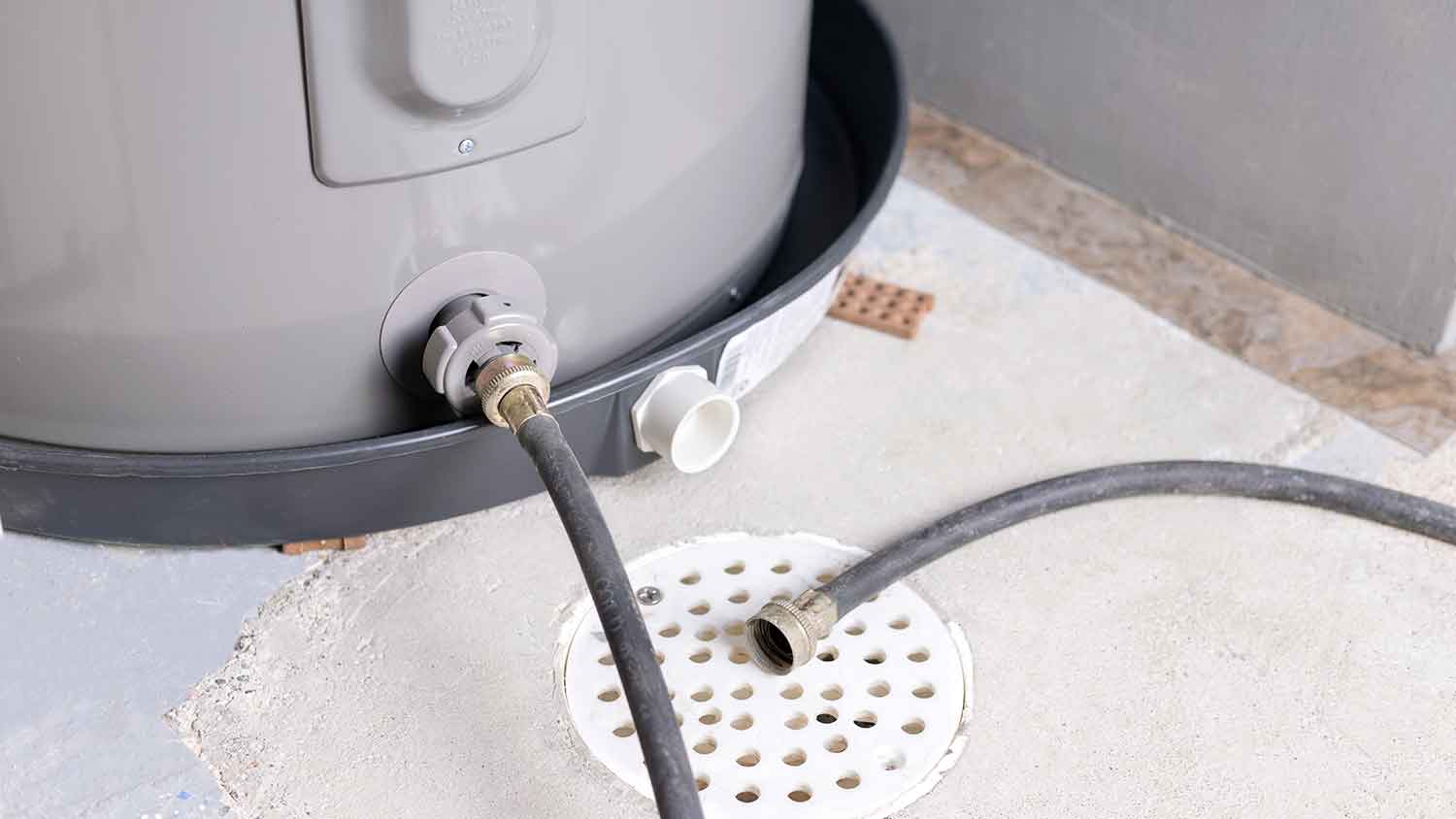
Regardless of the size of your tank water heater, it will have a drain valve near the bottom of the tank. The drain valve consists of a threaded nozzle end and a turnable valve to open and close the mechanism. The drain valve is crucial for regular flushing of your water heater, which is an important maintenance step.

Every tank-style water heater has a sacrificial anode rod, often on top of the tank. Most modern water heaters have a separate cap that hides the anode rod. However, some models combine the rod with the hot water outlet pipe. As its name suggests, the sacrificial anode rod corrodes faster than the tank metal to protect the tank from degradation. Consisting of zinc, aluminum, or magnesium, replacing the anode rod every three to five years is essential to protect the tank's integrity.
Tank-style water heaters that use gas as their energy source for heating have numerous parts that are exclusive to this specific type.
Gas Burner: The gas burner is where the hard work in your gas water heater happens. The burner allows gas to burn to create heat below the tank.
Heat Exchanger: Just above the burner, the heat exchanger transfers the burner's heat to your water without allowing the gas exhaust and water to contact each other.
Pilot Assembly: The pilot assembly stays on standby, ready to light the gas burner when the water in the tank drops below the set temperature. It can be a standing flame that's always on or an electric-start sparking system.
Gas Valve: The gas valve controls the flow of gas to the heater and allows you to set your preferred water temperature. It also monitors water temperature and shuts down the gas flow when it reaches the set level.
Exhaust: Because a gas water heater burns fossil fuel, the fumes must exit through the draft hood and flue instead of into your home. Both are parts of the exhaust system.
Blower: Some high-efficiency water heaters also incorporate a blower fan into the exhaust system.
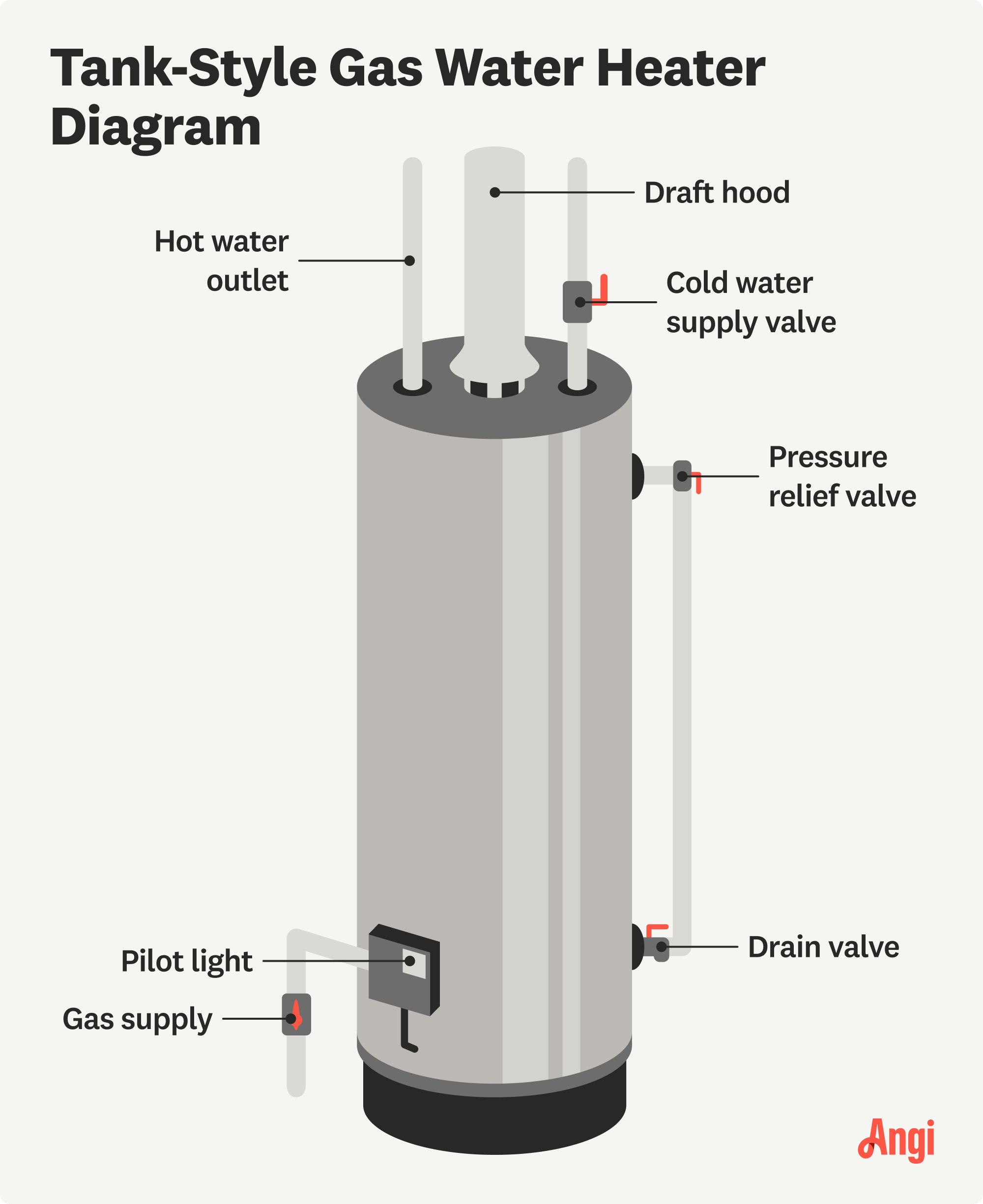
Electric tank-style water heaters are much simpler than their gas counterparts and contain none of the gas-specific water heater parts. However, a few parts exclusive to electric heaters don't appear on gas units.
Heating Element: Your electric water heater will have one or two heating elements, depending on the tank size. The element uses electrical current to produce heat and directly contacts the water in the tank. Heating elements can require replacing after several years and will burn out if they aren't in contact with water.
Power Supply: While some gas water heaters also have an electrical connection, electric water heaters have a more robust, 240-volt system to power the unit and supply the heat energy through the heating elements.
Thermostat: Similar to the gas valve on a gas water heater, the thermostat, or thermostats, on an electrical model controls the flow of electricity to the heating elements to maintain the set temperature level.
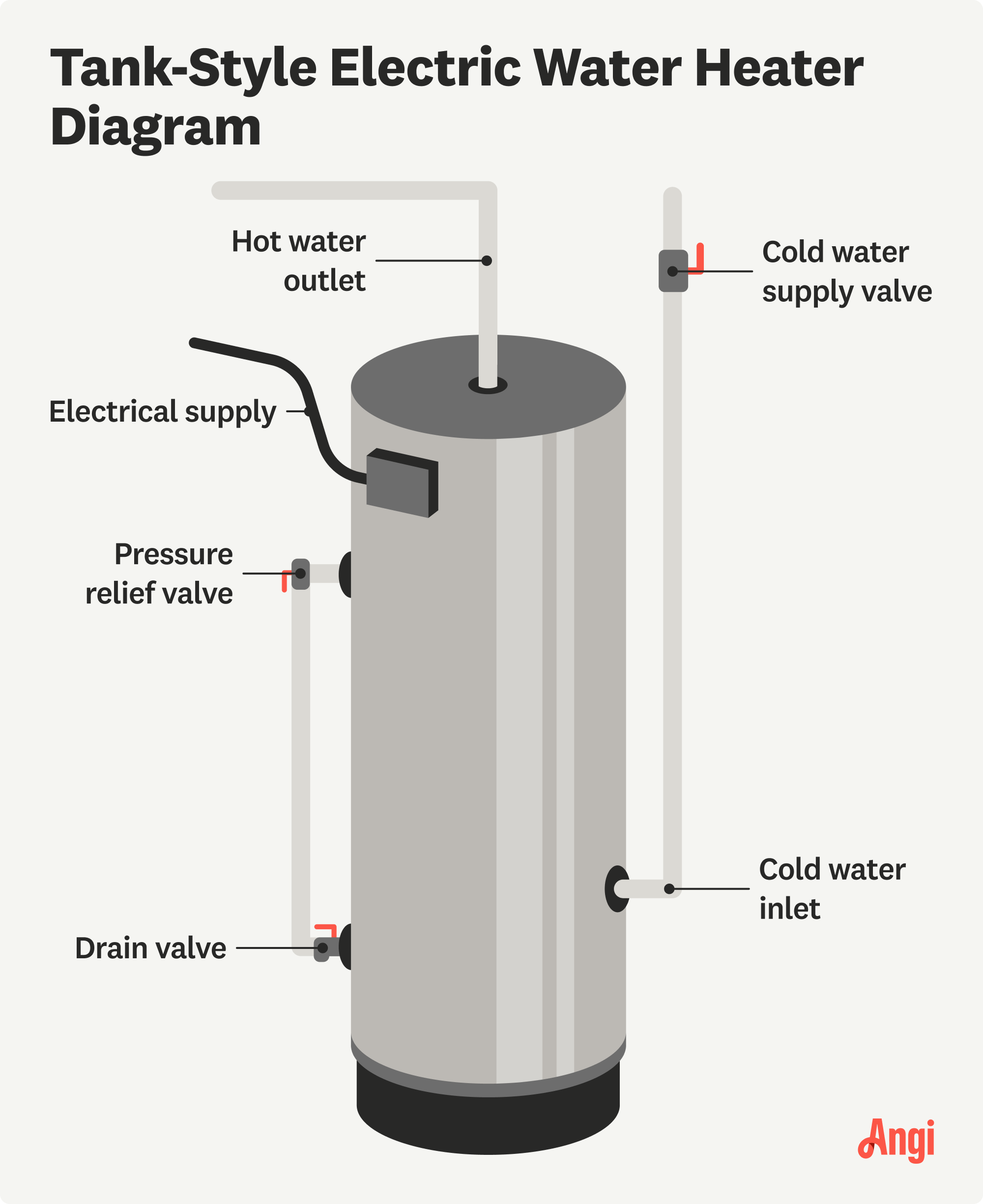
With the notable exception of a large water tank, tankless water heaters have many parts similar to the ones on tank-style versions.
Like tank-style water heaters, the inlet and outlet pipes on a tankless model bring water to and from the heater unit. You'll find a water shut-off valve on the cold water inlet pipe, usable when servicing the appliance.
Flow sensors are unique to tankless water heating systems. They tell the appliance when water begins to flow so the heating unit can engage and heat the water. Flow sensor failures or debris buildup on a flow sensor will cause the heater to not begin the heating process.
On the front of a tankless water heater, you'll find the control panel. It's here that you can adjust the water temperature and manipulate other settings. Many control panels will also provide simple status updates for your heater.
All tankless water heaters have internal parts that monitor and regulate the heat transferred to the flowing water. These thermostats and sensors are vital to the heater's operation, and failures can happen, which will cause the heater to operate incorrectly.
Like tank-style water heaters, tankless varieties come in both gas and electric models. Gas models are more elaborate and contain the following specific items that you won't find in an electric version. The parts are mostly similar to tank-style gas water heaters.
Burner: The burner is where the gas ignites and burns to provide heat for the flowing water.
Heat Exchanger: This device consists of a chamber that contains the heat produced by the burner and a water pipe coil. The exchanger keeps water and gases separate while transferring heat from the gases to the water.
Gas Control Valve: Much like the gas control valve on a tank-style water heater, the gas control valve monitors and regulates the flow of gas to the burner.
Venting: Because gas water heaters produce CO2, exhaust venting is necessary. You'll find the exhaust vent on the top or at the back of your heater. Your heater will also have an air intake port to allow replacement air into the appliance.
Electric Connection: Despite the fact that gas energy provides the heat, your tankless gas water heater also requires a small amount of electricity to operate. The connection is often an outlet plug or hardwiring.
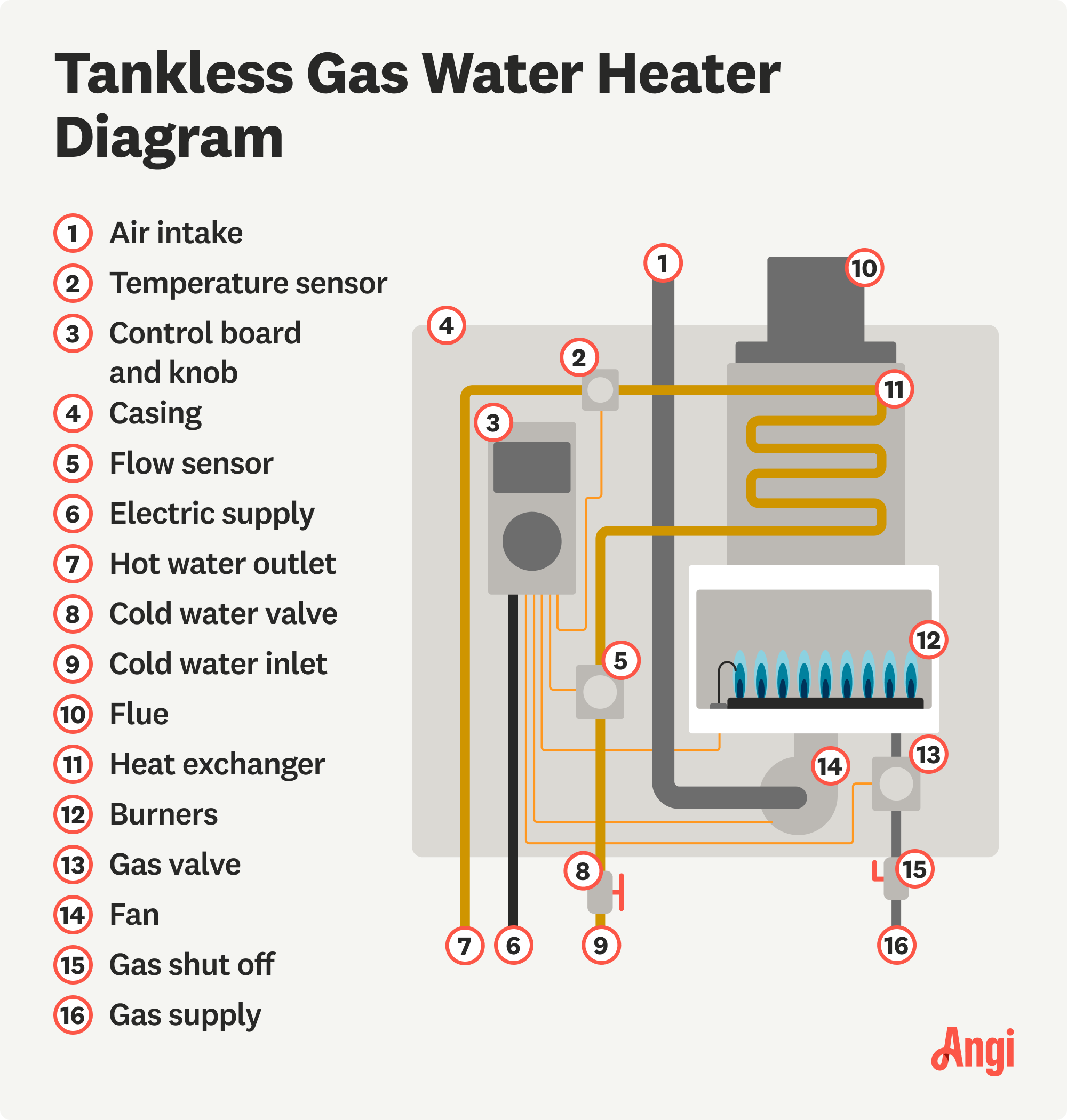
Electric tankless water heaters, like their tank-style counterparts, are simpler devices than their gas-powered equivalents. Electric versions have none of the gas-specific elements but do have the following components.
Heating Element: Instead of a burner and exchanger, heating elements use electricity to transfer heat to the water and are always in direct contact with each other. A single heater usually has multiple elements.
Electrical Distribution: Because electric tankless water heaters have higher electrical demands than gas versions, they will have a more robust electrical distribution system inside the unit's housing to direct electrical current to the control panel and the heating elements.
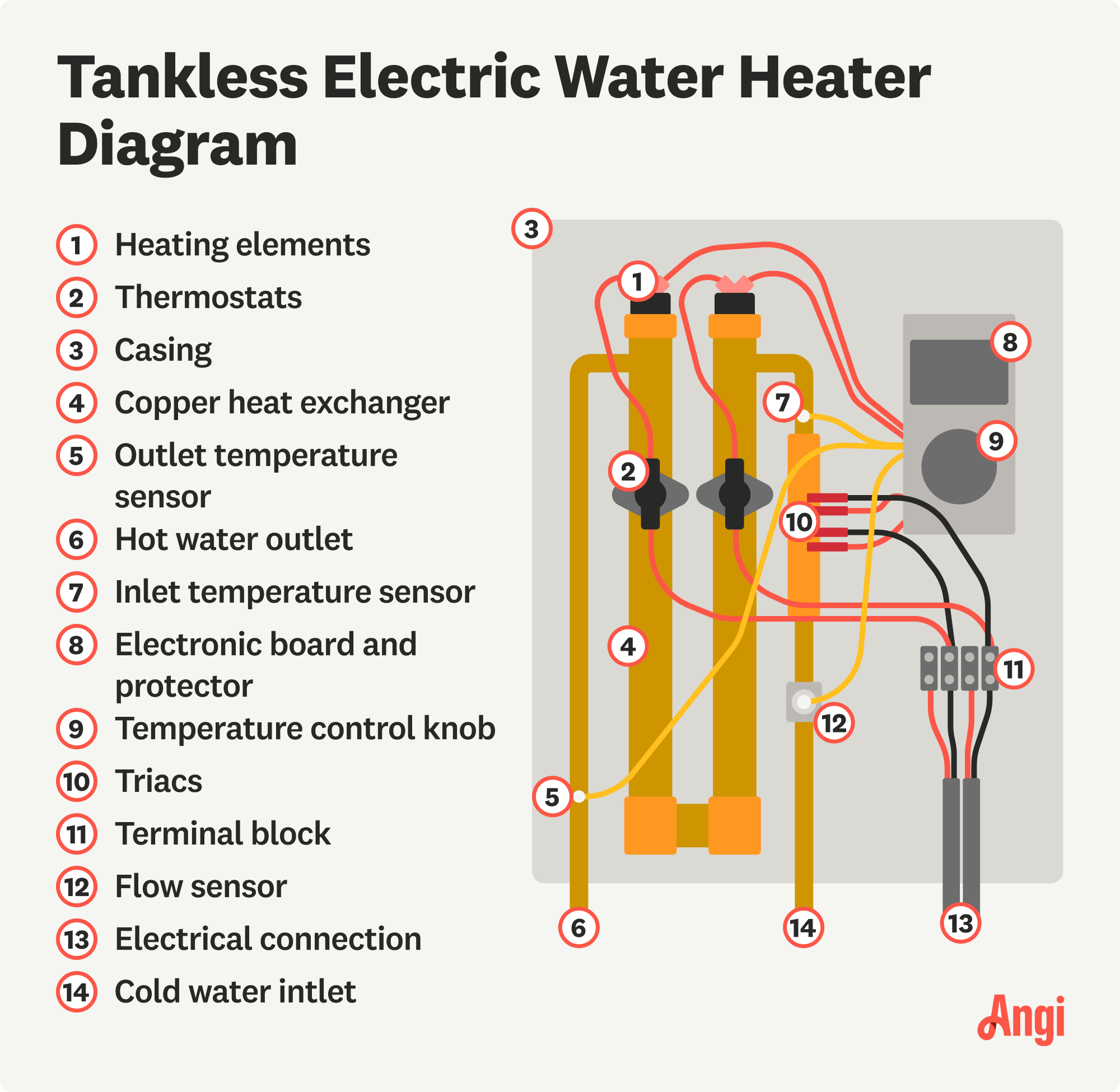
Giving your hot water heater a robust visual inspection every few weeks to spot leaks or burst pipes can help you catch a major mechanical or plumbing issue. It's also helpful to simply glance at the unit every time you pass by it to look for signs of trouble. One wise homeowner tip is to arrange to have your water heater inspected by a pro whenever you schedule annual furnace maintenance at your home.
The most important maintenance task you can perform to keep hot water heater components running smoothly is flushing. Ideally, you should flush your water heater at least once every 12 months. In many homes, flushing twice a year is necessary due to hard water or excessive sediment. If you're uncomfortable flushing your own water heater, your water heater professional can perform the task. Water heater flushing costs between $110 and $200 on average.
On average, the cost to repair a hot water heater is $600. However, repair costs can range anywhere from $90 to $1,725, depending on the complexity of the issue. When merely replacing a water heater component on your own, prices can range from as low as $25 for a new anode rod to more than $400 for a new thermostat.
However, homeowners who attempt a DIY hot water part repair on their own run the risk of damaging the unit, which is why most choose to hire a local water heater repair pro for the job.
Water heaters last between eight and 20 years, depending on type, water quality, and maintenance. At some point, you'll need to replace yours. The cost to replace a water heater when repairs are no longer the best solution averages between $880 and $1,800.
From average costs to expert advice, get all the answers you need to get your job done.

Running out of hot water too quickly or hearing strange noises when you call for hot water? Use this water heater repair cost guide to see what a fix will cost.
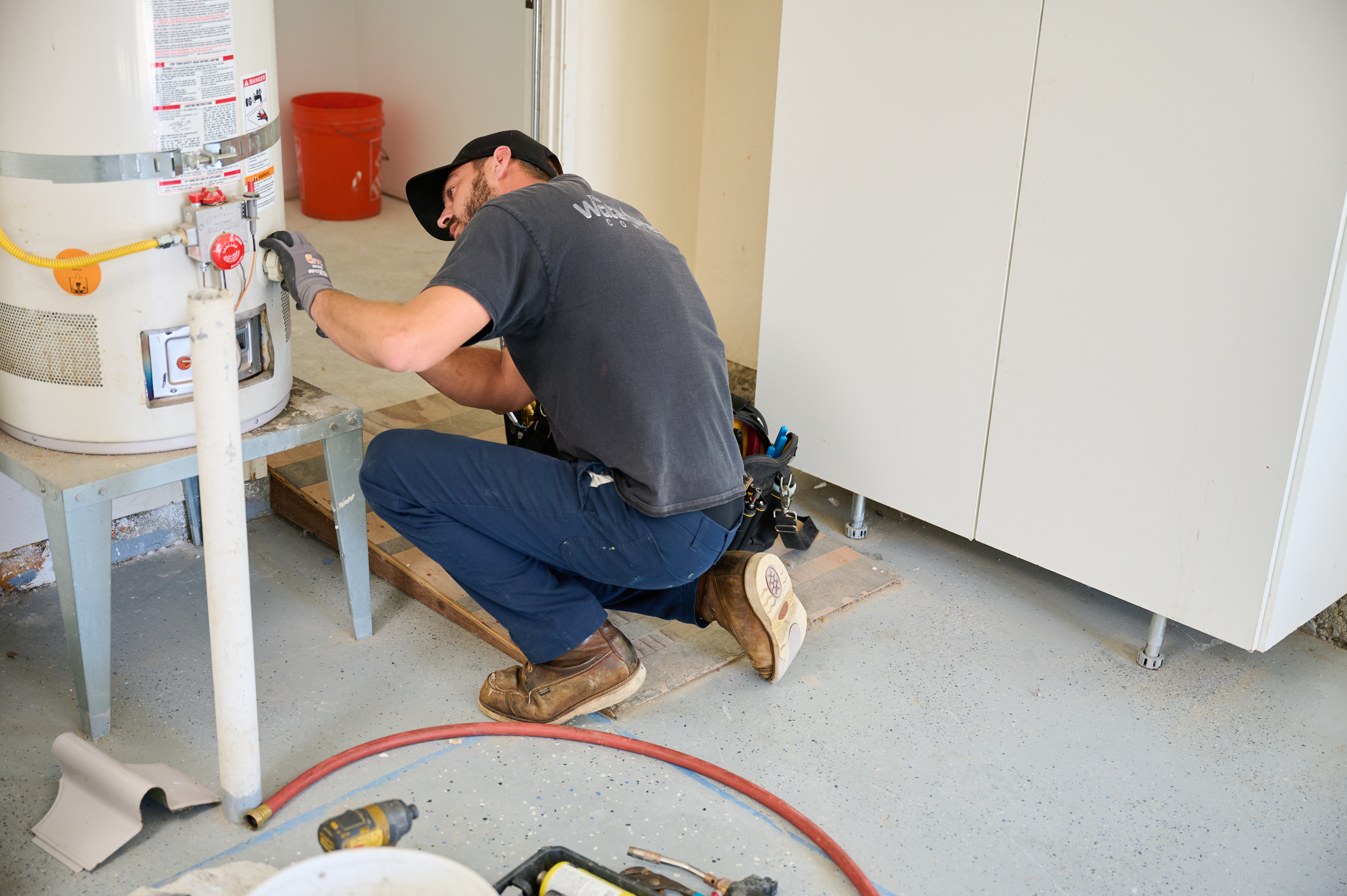
Tankless water heater costs in Los Angeles, CA depend on the size of your water heater, location, fuel type, and more. Keep reading to calculate your expenses.

Running out of hot water too quickly? Use this water heater repair cost guide to see what a fix will cost in Los Angeles, CA.

Did your tankless water heater freeze due to unexpected cold weather? Follow these steps to thaw your unit and prevent future freezings.
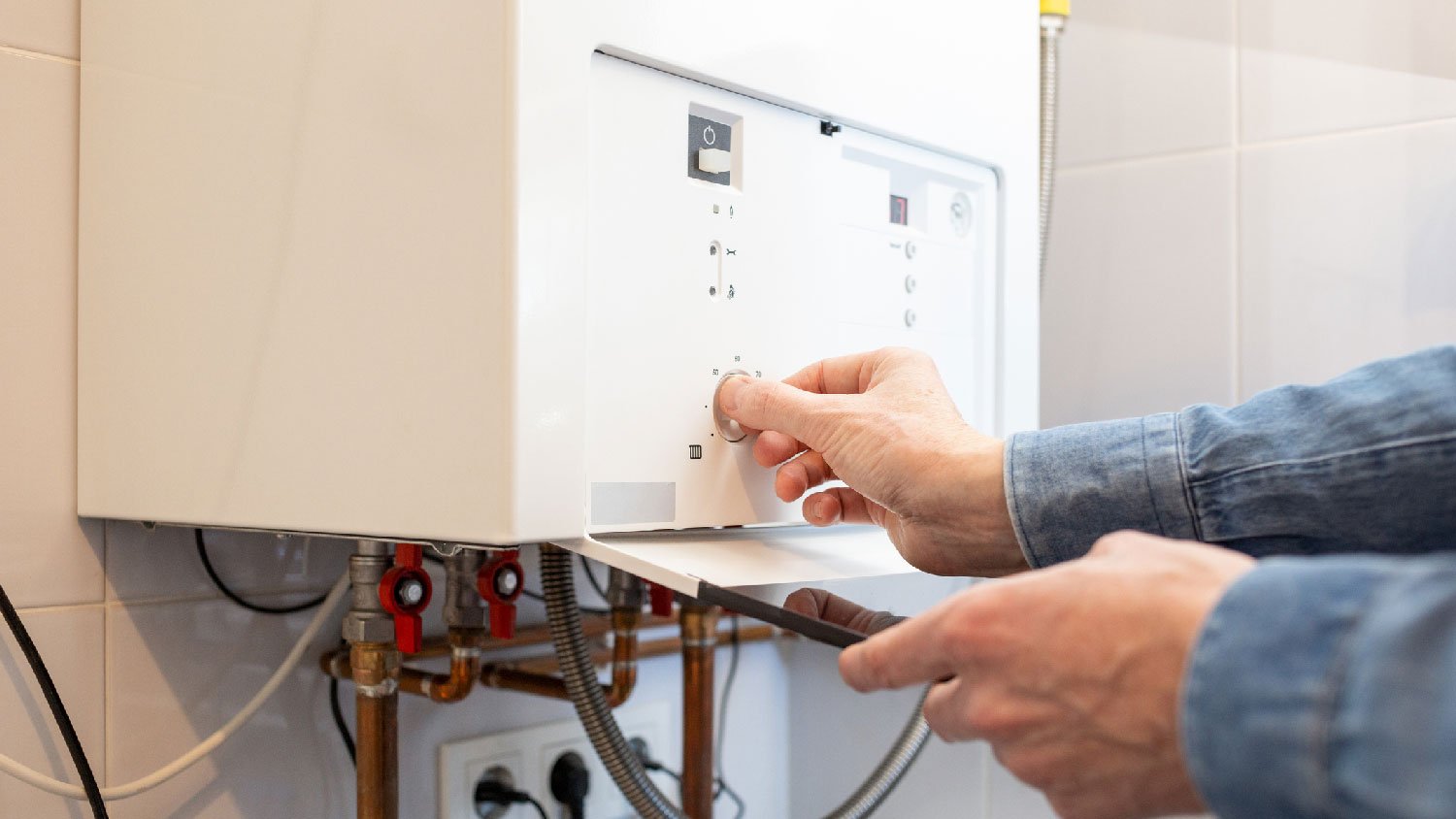
Gas water heater not lighting? There are a handful of reasons an issue like this happens, but most of the causes are simple and inexpensive to fix.
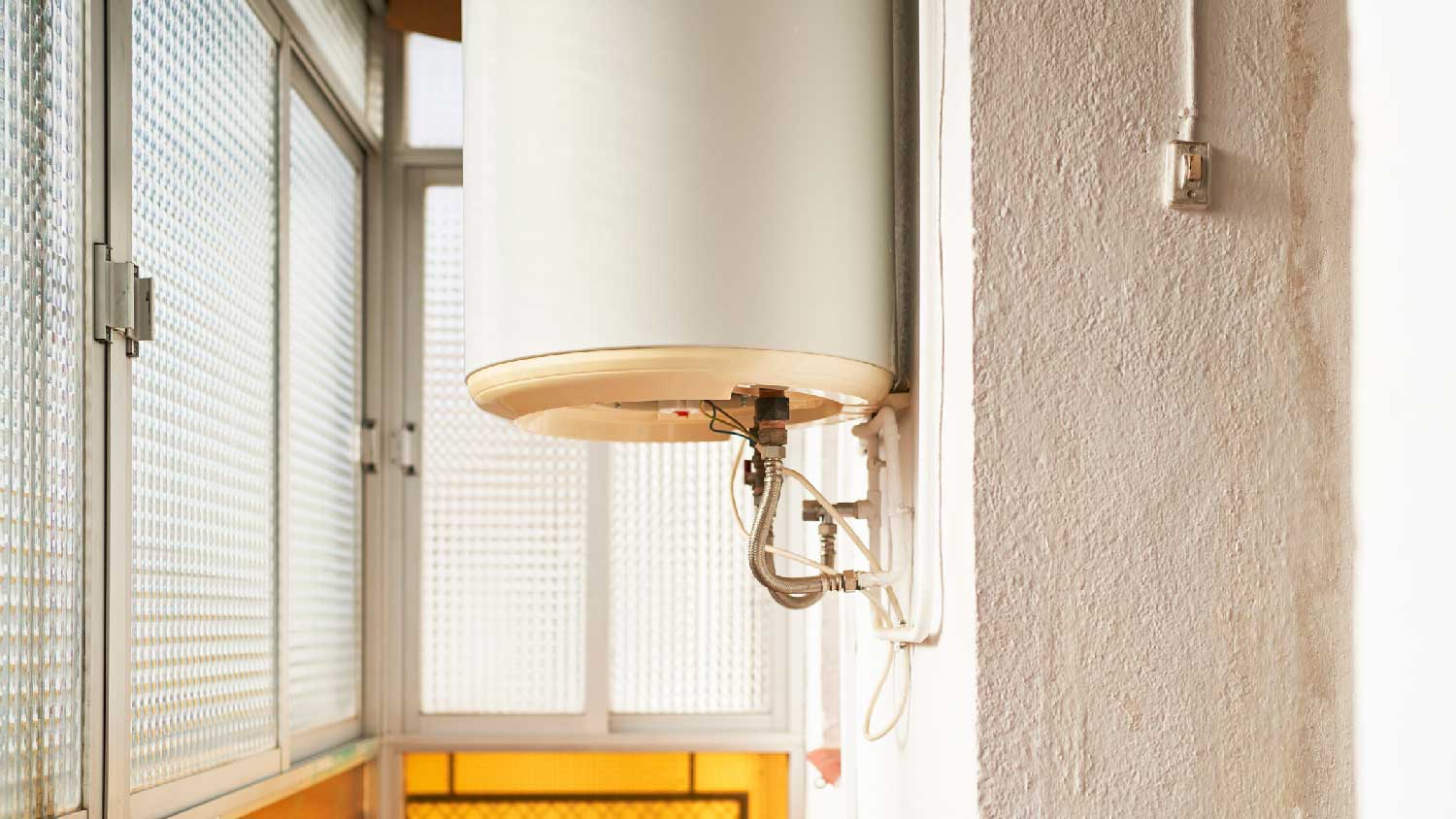
Installing a recirculating pump on a water heater is an involved job, and one only seasoned DIYers should attempt. Learn how to tackle this job below.